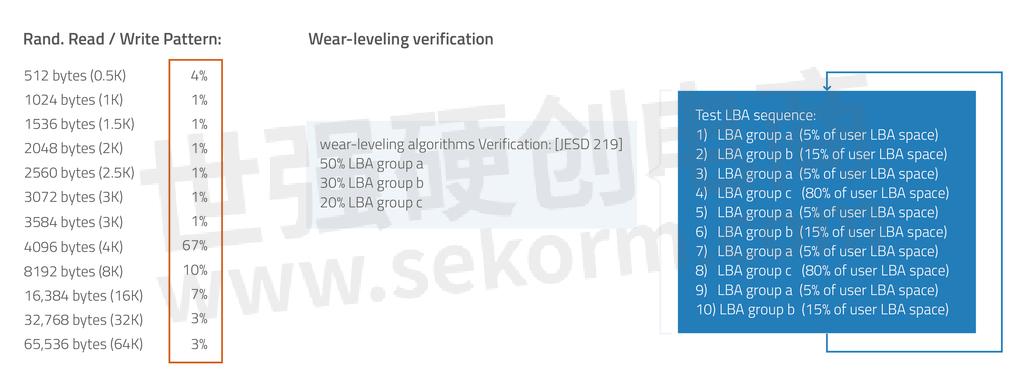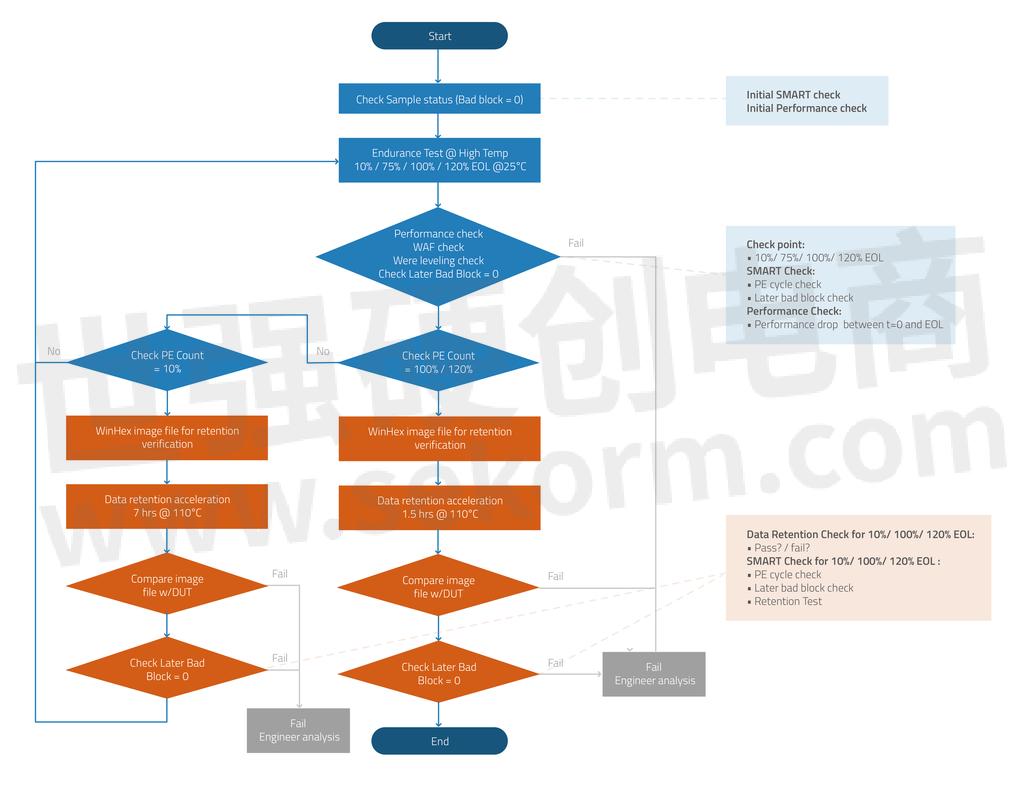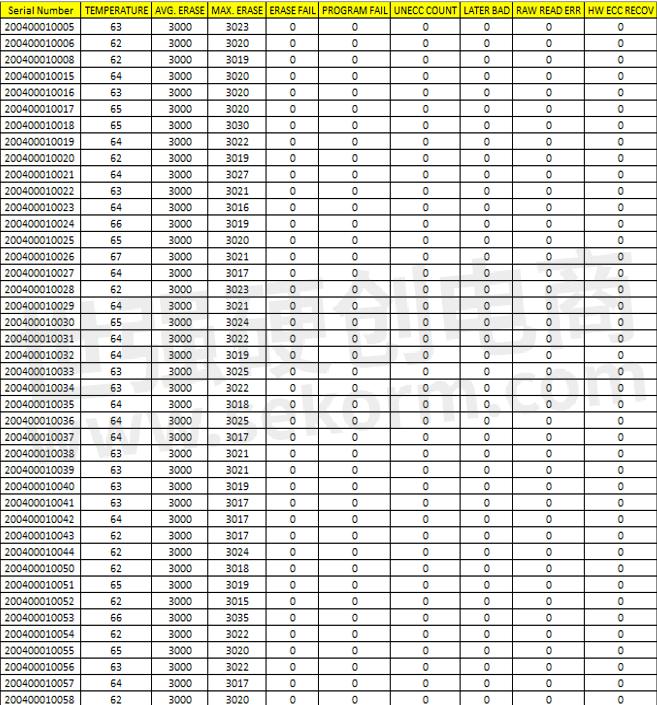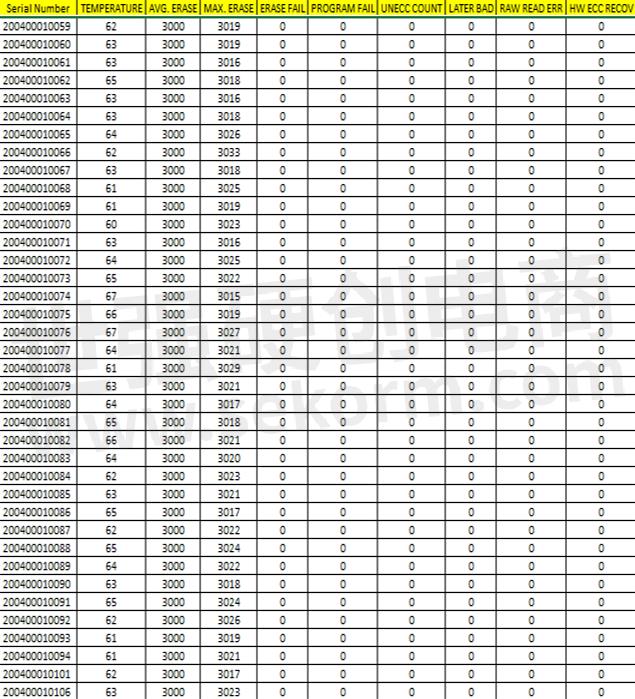SSD End-of-Life Validation Test: Ensuring Reliability, Endurance and Retention From 0% to 100% and Beyond EOL

Solid-state drives (SSDs) can function for a finite period. How long can yours last?
The expected life span of an SSD depends on several factors, such as NAND flash type, the number of times data has been written to and erased from the drive (also referred to as program/erase cycle), workload, and temperature. As an SSD degrades over time, bit errors increase, and its ability to keep reliable data decreases.
At ATP Electronics, we perform end-of-life (EOL) testing to determine the effective use of the SSD over a certain period given the factors mentioned earlier. The goal is to make sure that our SSDs continue to perform reliably and maintain data integrity over the life span (and even beyond) as required.
ATP EOL Validation Test Process Flow
ATP uses the Gym & Coach System to perform a series of comprehensive EOL validation tests at the drive level. This entails subjecting the SSD to numerous cycles to ascertain or validate the endurance capability and reliability of the drive.
This test helps predict how long to continue using the SSD and when the SSD will fail based on the target P/E cycle and data retention. Customers can therefore determine when to stop using the drive, and hence develop a transition plan for eventual replacement.
The following items are validated in the ATP EOL validation test:
•Program/Erase (P/E) Cycle Check. One of the main causes of flash wear out is the number of P/E cycles performed. During this test, P/E cycles are performed on the SSD until its rated end of life to check for degradation and retention capabilities. This test validates if our quality can meet the TBW rating on the datasheet. Sample devices under test are checked at 10%, 75%, 100%, and even 120% EOL, which is beyond the rated usable life span of the SSD.
•Later Bad Block Check. NAND flash blocks can wear out from use, which can make them unreliable or unusable. This test checks for bad blocks at different stages of the SSD’s life span: 10%/ 100%/ 120% EOL.
•P/E Count Distribution (Wear Leveling) ATP’s wear-leveling test process follows JEDEC’s JESD219 standard for the Enterprise application class. During the P/E aging process, each writer should be followed by a read (i.e., W/R = 1), and all errors are recorded. Reading solely at the SSD’s end of life is not acceptable.
The Enterprise Endurance Workload according to JESD219 consists of random data distributed across the SSD. The following figure shows the payload size distribution.

Figure 1. JESD 219 Enterprise Endurance Workload payload size distribution
•Retention Test after 120% EOL P/E Cycle. This test checks if the SSD can retain or hold data at different stages of its lifespan (10%/ 100%/ 120% EOL).
The following figure shows the ATP EOL Validation Test Process Flow.

Figure 2. ATP EOL Validation Test Process Flow
SSD EOL Validation Results
•All sample SSDs tested completed the 100% EOL Test successfully.
•From 0% to beyond EOL, there were…
No program errors
No erase errors
No uncorrectable error correction code (UECC) errors
No later bad blocks
•The cumulative TBW for all SSDs demonstrates UBER to be less than 1 Uncorrectable Read Error in 1017 bits read on SSD drive level
•Retention test results would meet:
1-year minimum data retention requirement at the start of the drive’s life, in an environment with up to 40°C at 10% PE cycle
3 months minimum data retention requirement at the end of the drive’s life in an environment with up to 40°C


Figure 3. Sample EOL Validation Test successfully performed for an ATP Customer.
Key Takeaways
ATP performs EOL Validation Test at the drive level to validate SSD endurance and reliability within and even beyond its rated life span. P/E cycles, later bad blocks, wear leveling, and retention tests at different stages of the SSD life span (from 10%, 100%, and up to 120% EOL) are among the key items checked. All ATP SSDs tested completely this test successfully with no program/erase errors, UECC errors or later bad blocks, and UBER less than 1 Uncorrectable Read Error in 1017 bits read, demonstrating ATP SSDs’ exceptional reliability for mission-critical applications during its rated service life and even beyond EOL.
ATP’s EOL Validation Test is just one of the many reliability and endurance tests developed and performed by ATP to ensure strict compliance to the highest standards of quality. ATP is committed to delivering high-performance and high-endurance NAND flashes storage products to ensure the best value for a total cost of ownership (TCO).
- +1 Like
- Add to Favorites
Recommend
This document is provided by Sekorm Platform for VIP exclusive service. The copyright is owned by Sekorm. Without authorization, any medias, websites or individual are not allowed to reprint. When authorizing the reprint, the link of www.sekorm.com must be indicated.

































































































































































































































































































































































































































































































































































































































































































































































































































































































































